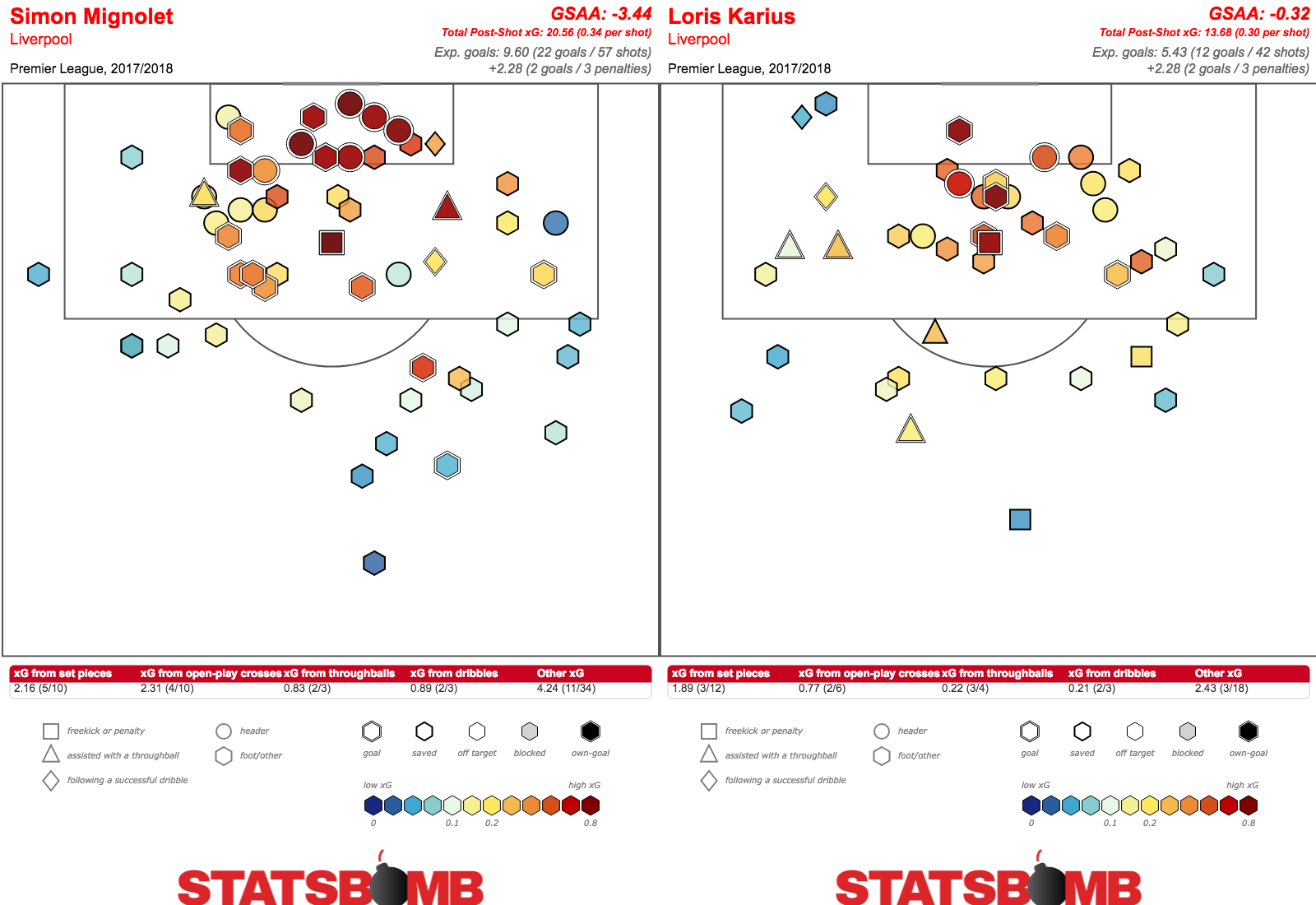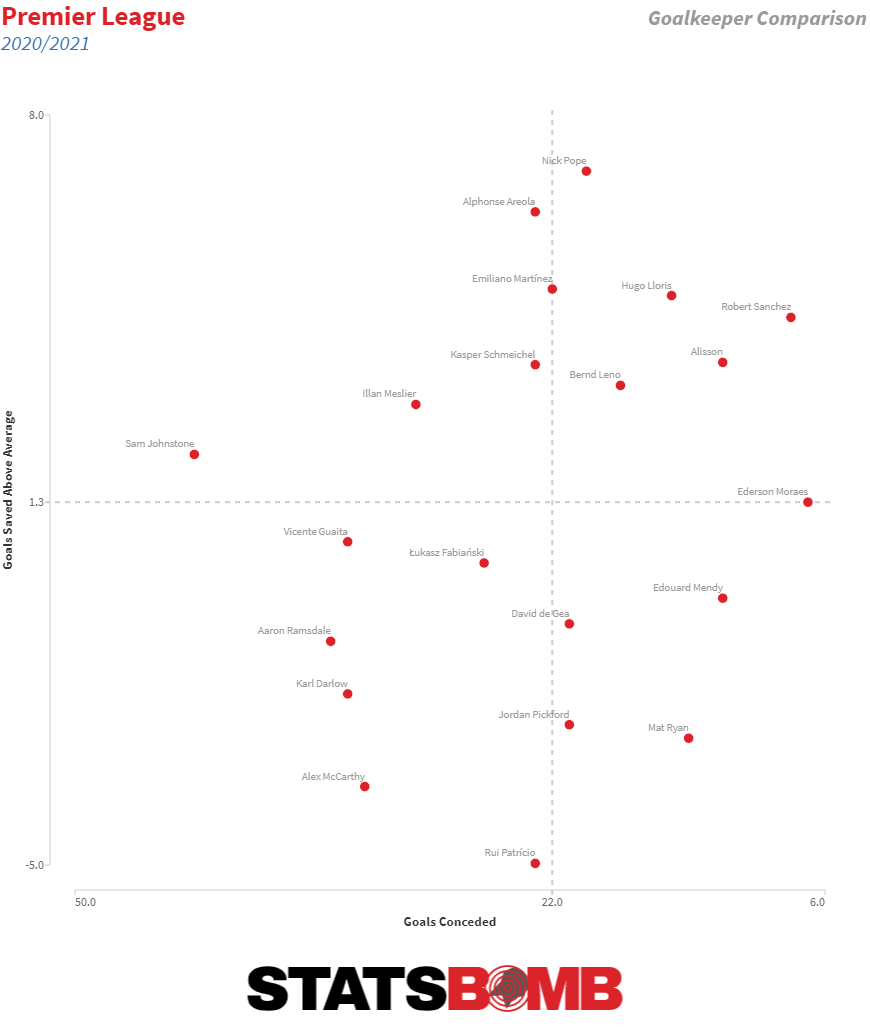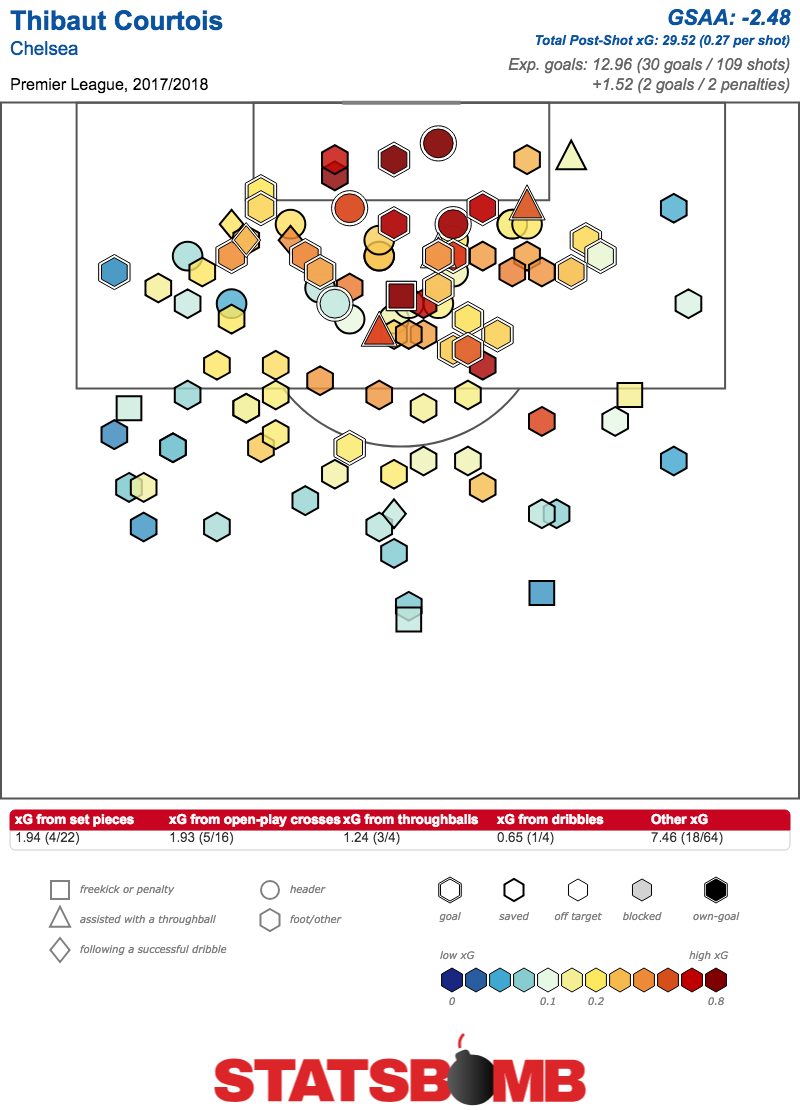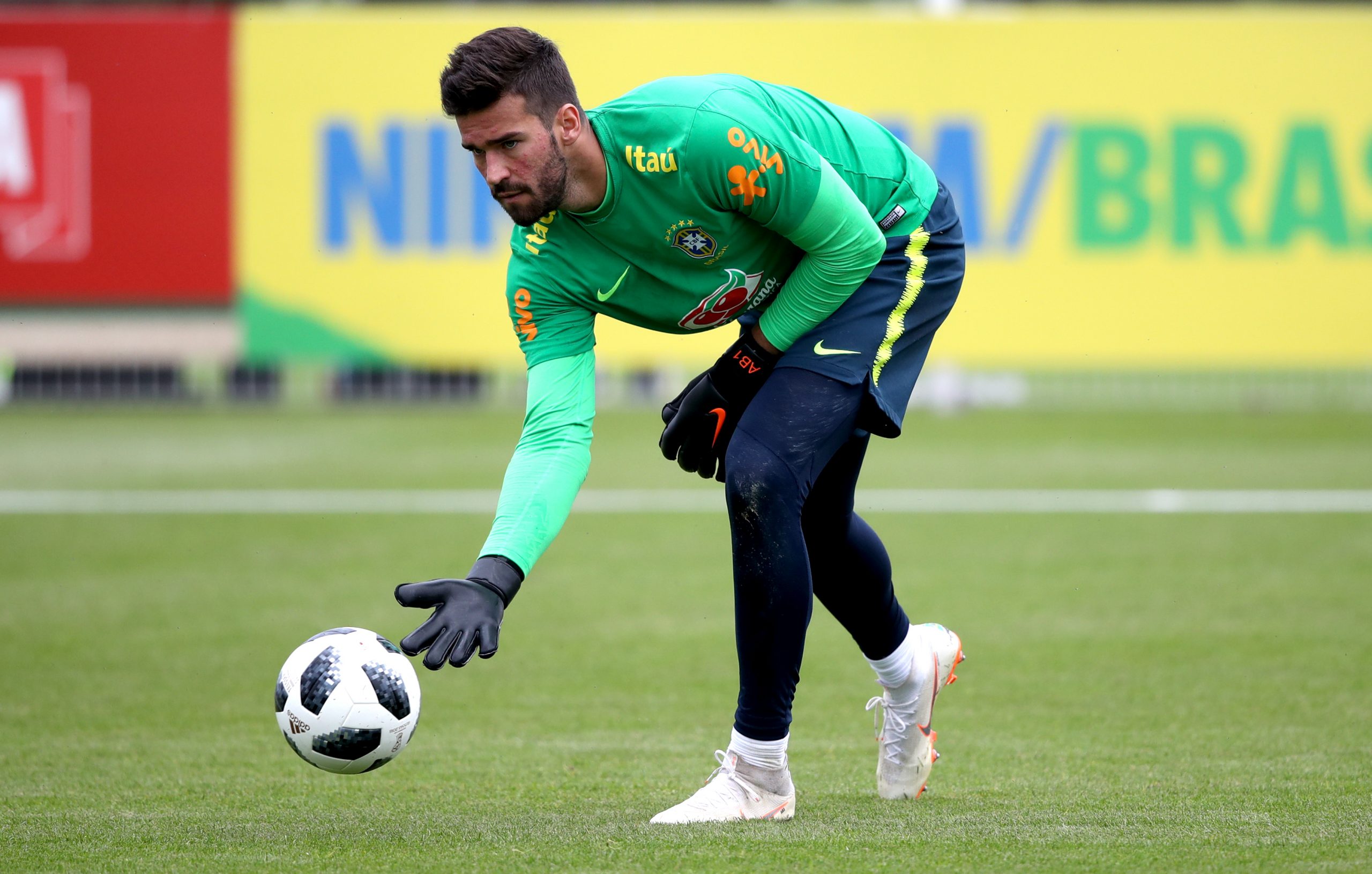This summer, Liverpool shocked the footballing world by not just breaking but smashing the transfer record for a goalkeeper that had stood since 2001. Then Chelsea broke it again less than a month later. One was bought to fix a long term weakness in the side, the other needed to replace a departing former Golden Glove winner. Alisson Becker and Kepa Arrizabalaga have become the two most expensive goalkeepers in the history of football. By a lot. As such, it’s not unreasonable to judge them both by very high standards.
Alisson Becker
Liverpool are at this point well known for incorporating data into their recruitment, so it would hardly be a surprise to know that Alisson has shown up well in a lot of metrics. While StatsBomb’s new goalkeeping data has not yet recorded last season’s Serie A games, his performances for Roma did earn him praise from some existing goalkeeping models, with Colin Trainor and Mark Taylor both highlighting him as a standout. StatsBomb did record data for the World Cup, but the number of chances he faced (1.57 post-shot xG, from which he conceded 2 goals) were so few as to tell us almost nothing about his abilities.
While the price tag made expectations very high, Alisson’s predecessors in a Liverpool shirt did the exact opposite. Of the 20 “first choice” goalkeepers in the Premier League last season, Simon Mignolet’s shot stopping is rated as the 19th best.
While the model estimates that the average keeper “should” have saved 68.4% of the shots Mignolet faced, the Belgian only managed 61.4%, a goals saved above average percentage of -7.0% only beaten by Joe Hart at the negative end of the scale. He can hardly complain that he was dropped halfway through the season, and while Karius did offer an improvement, he was only saving at around an average rate which, combined with a disastrous Champions League final, saw him get the hook as well.

As for Alisson, it seems to be so far, so good for the Brazilian. Thus far in the Premier League, he has saved 2.48 more goals than one would expect from the average goalkeeper, or 0.19 per 90. Alisson has surely benefited from a much less chaotic Liverpool defence this season, with the average keeper being expected to save 75.1% of the shots he has faced so far.
Liverpool have made sure that the average chance Alisson faces is the second easiest of any keeper in the Premier League this year, but he has still beaten expectations with a save percentage of 83.3%, and a goals saved above average percentage of 8.3%. Had Mignolet been playing (and performing as he did last year), the model estimates that Liverpool would have conceded around 9.25 goals. That Jurgen Klopp’s men have only let in 5 shows the value Alisson adds over the current number two. 
It’s worth pointing out that Alisson has still only faced 29 shots on target. If he is able to maintain his current form over a full season then he will have surely justified his price tag, though this remains an open question. The information that exists about Alisson’s previous performances, and Liverpool’s reputation for incorporating analytics into recruitment, suggests that the expectations should be high, though, and his shot stopping performances so far have matched what one might expect from a £65 million goalkeeper.
Of course, it is not merely his shot stopping that has earned Alisson such a reputation. His ability with his feet has been lauded and highlighted, earning him the reputation of a “modern” goalkeeper who is able to kick it as well as save it. On this front, it is also mostly as one would expect. Alisson’s raw passing completion percentage of 80% remains slightly shy of league leaders Kepa and Ederson, though he is playing passes about 12% longer than the Chelsea and Man City keepers on average.
Where he really shines with his feet, though, is when we incorporate StatsBomb’s pressure data. His passing accuracy under pressure of 73% is the best in the Premier League, despite four other starting keepers playing it shorter in these situations. He is only seeing a 7% drop in his completion under pressure, while Ederson and Kepa are seeing a 15% and 19% decrease, respectively. This might be a key aspect of why Liverpool wanted him so badly.
It’s well known at this point how Klopp likes to invite the opposition to press his side at strategic moments before being able to launch a counter attack. If Liverpool can invite the press onto Alisson while he is able to stay calm and still play the pass he wants, this helps open up spaces higher up the pitch as the opponent moves forward to press the keeper only to find themselves easily bypassed. If this is worth a few goals a year, then Alisson’s value is even greater than that which his shot stopping brings.

Kepa Arrizabalaga
The situation Kepa found himself in at Stamford Bridge could not be more different to Alisson’s. The Spaniard replaced a widely praised goalkeeper in Thibaut Courtois, who left Chelsea for what he expected to be bigger and better things at Real Madrid. It is worth pointing out that though Courtois’ reputation remains high, the data does not quite support this, with the Belgian merely performing around as expected last season, conceding 30 goals from 29.52 post-shot xG.

So Kepa comes into a spot where merely outperforming the average keeper will appear as an upgrade on one of the world’s best. With David de Gea’s disappointing performances in the World Cup (though his Manchester United form remains excellent), there was also a genuine chance for Kepa to become Spain’s first choice.
Easy, right?
Well… It’s worth mentioning that we here at StatsBomb have priors with Kepa. Back in the summer, our data scientist Derrick Yam wrote about the signing and came to the conclusion that the Spaniard was “an okay shot stopper, average cross collector, and average distributor”. Yam took the view that “at that price, I don’t see the value in Kepa Arrizabalaga. We wait for years from now, to find out how wrong I am”. We don’t yet have years, Derrick, but so far we haven’t seen reason to think you got this wrong. Having faced 7.35 post-shot xG, Kepa has conceded a middling 8 goals.

While it’s far too early to make any huge claims on his shot stopping ability at Chelsea, this is about in line with his Athletic Club form last season, where he conceded 39 goals from 40.29 post-shot xG.

Kepa is fortunate to be playing in a very effective Chelsea side. 76.3% of the shots he has faced would be expected to be saved by the average keeper. No other keeper in the Premier League has been backed to save a higher percentage.
A combination of strong organisation from Maurizio Sarri’s side and likely a touch of bad finishing from the opposition is ensuring that Kepa has not had to face extremely difficult shots. Even so, it is not obvious that the Spaniard is averaging a great deal of value from his shot stopping. When looking at his distribution, there’s not too much to complain about.
As one would expect from a keeper in a Sarri team, Kepa generally keeps it short, with only 4 first choice keepers in the league hitting a lower average pass length. His passing accuracy of 85% is only marginally behind league leader Ederson, very much a positive for a side so often playing out from the back. There are some concerns in his reaction under pressure, though.
His pressured pass completion is down to 66%, and the drop in pass completion rate under pressure is the 4th worst in the league. This may simply be a side effect of choosing to often punt it longer when put under pressure, as his increase in pass length when pressed is second only to Jordan Pickford. Considering how much Sarri’s build up play generally starts with Kepa, if teams want to unsettle Chelsea then pressing the keeper might be an effective way to do it.

What needs to be clear about Kepa’s transfer fee is that it was a situation which should perhaps not be interpreted as representing his true value. The player was bought from Athletic Club, a team with a strict rule over only signing players with Basque heritage. With Athletic’s tradition being what it is, the club are very reluctant to sell existing players due to the small talent pool available, and will generally insist on the full release clause being met.
With the market inflated by Liverpool’s purchase of Alisson, these factors likely made the Kepa transfer fee justifiable to Chelsea’s hierarchy. Even so, one still has to ask whether this was the best way to spend the money. Goalkeepers such as Bernd Leno and Rui Patricio made moves in summer 2018 for a fraction of the fee Chelsea paid Athletic Club, and it is not especially obvious that Kepa is a level above. Nonetheless, there is no reason to think that Chelsea have a particularly bad goalkeeper. There remains scant evidence, though, that he is adding huge value to the side.
Header image courtesy of the Press Association
